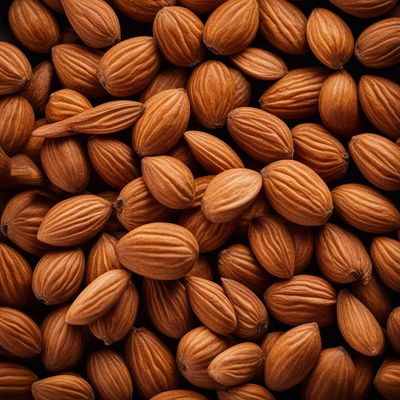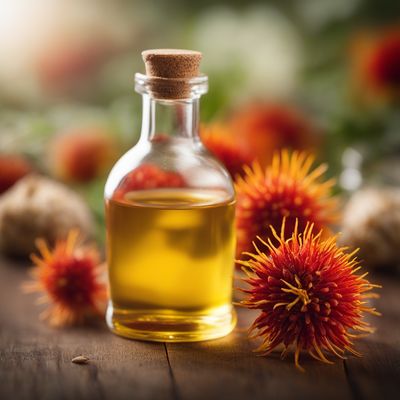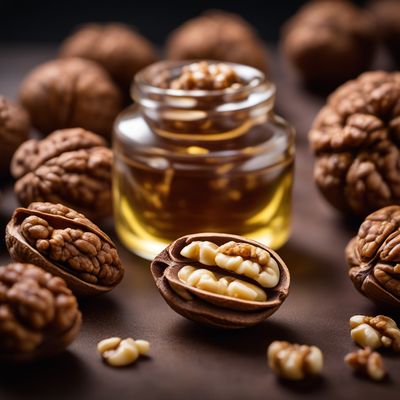
Ingredient
Sunflower seed oil, edible
Golden Elixir from the Sun
Sunflower seed oil is a pale yellow oil with a mild and neutral flavor. It has a smooth and light texture, making it suitable for various culinary applications. The appearance of sunflower seed oil is clear and transparent, with a golden hue.
Origins and history
Sunflower seed oil has been used for centuries, with its origins traced back to Native American tribes who cultivated sunflowers for their seeds. It gained popularity as a cooking oil in Russia and Eastern Europe before spreading to other parts of the world. Today, it is widely produced and consumed globally.
Nutritional information
Sunflower seed oil is a rich source of vitamin E, an antioxidant that helps protect cells from damage. It also contains heart-healthy monounsaturated fats and polyunsaturated fats, including omega-6 fatty acids. Sunflower seed oil is lower in saturated fat compared to some other cooking oils.
How to select
When selecting sunflower seed oil, opt for brands that use high-quality sunflower seeds and employ proper extraction methods. Look for oils that are labeled as cold-pressed or expeller-pressed, as these methods help retain the oil's natural flavor and nutritional properties. Additionally, check the expiration date to ensure freshness.
Storage recommendations
To maintain the freshness and quality of sunflower seed oil, store it in a cool, dark place away from direct sunlight and heat sources. Exposure to light, heat, and air can cause the oil to deteriorate and become rancid. Properly stored sunflower seed oil can last for several months.
How to produce
Sunflower seed oil can be produced on a small scale by growing sunflowers in a sunny location with well-drained soil. The seeds can be harvested and processed using a mechanical press or other oil extraction methods. However, commercial production requires specialized equipment and large-scale cultivation.
Preparation tips
Sunflower seed oil can be used for various cooking methods, including sautéing, frying, baking, and salad dressings. It is a versatile oil that can withstand high heat due to its high smoke point, making it suitable for deep-frying and stir-frying. Additionally, sunflower seed oil can be used as a substitute for butter or other oils in baking recipes to create moist and tender baked goods.
Substitutions
Other suitable oils that can be used as substitutes for sunflower seed oil include canola oil, soybean oil, safflower oil, or grapeseed oil. Each oil has its own unique flavor profile and smoke point, so consider the specific recipe and desired outcome when choosing a substitute.
Culinary uses
Sunflower seed oil is commonly used in salad dressings, marinades, and vinaigrettes to add a light and neutral flavor. It can also be used for frying or sautéing vegetables, meats, or seafood. In baking, sunflower seed oil can be used in cakes, cookies, or muffins to create moist and tender textures. Its versatility makes it a staple in many cuisines around the world.
Availability
Sunflower seed oil is widely available in grocery stores, supermarkets, and specialty food stores. It is produced in many countries, including the United States, Russia, Ukraine, Argentina, and China.
More ingredients from this category » Browse all

Maize oil, edible
Golden Elixir: Unveiling the Secrets of Maize Oil

Peanut oil, edible
Liquid Gold: Unveiling the Versatility of Peanut Oil

Hemp seed oil
Nature's Elixir

Rape seed oil, edible
The Golden Elixir: Edible Rapeseed Oil

Pumpkin seed oil
Liquid Gold: Unveiling the Richness of Pumpkin Seed Oil

Grape seed oil
The Versatile Elixir

Sesame seed oil, edible
The Golden Elixir: Edible Sesame Seed Oil

Almond oil
Liquid Gold

Cotton seed oil, edible
The Versatile Cotton Seed Oil

Soya bean oil, refined
The Versatile Oil: Refined Soya Bean Oil

Safflower seed oil, edible
The Golden Elixir: Unveiling the Secrets of Safflower Seed Oil

Walnut oil
Liquid Gold: Unveiling the Richness of Walnut Oil


